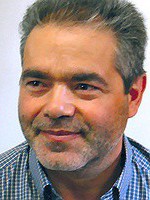resumo
Sol-gel synthesis using inorganic and/or organic precursors that undergo hydrolysis and condensation at room temperature is a very attractive and less energetic method for preparing bioactive glass (BG) compositions, as an alternative to the melt-quenching process. When properly conducted, sol-gel synthesis might result in amorphous structures, with all of the components intimately mixed at the atomic scale. Moreover, developing new and better performing materials for bone tissue engineering is a growing concern, as the aging of the world's population leads to lower bone density and osteoporosis. This work describes the sol-gel synthesis of a novel quaternary silicate-based BG with the composition 60 SiO2-34 CaO-4 MgO-2 P2O5 (mol%), which was prepared using acidified distilled water as a single solvent. By controlling the kinetics of the hydrolysis and condensation steps, an amorphous glass structure could be obtained. The XRD results of samples calcined within the temperature range of 600-900 degrees C demonstrated that the amorphous nature was maintained until 800 degrees C, followed by partial crystallization at 900 degrees C. The specific surface area-an important factor in osteoconduction-was also evaluated over different temperatures, ranging from 160.6 +/- 0.8 m(2)/g at 600 degrees C to 2.2 +/- 0.1 m(2)/g at 900 degrees C, accompanied by consistent changes in average pore size and pore size distribution. The immersion of the BG particles in simulated body fluid (SBF) led to the formation of an extensive apatite layer on its surface. These overall results indicate that the proposed material is very promising for biomedical applications in bone regeneration and tissue engineering.
palavras-chave
BIOACTIVE GLASSES; ZIRCONIA; SYSTEM; GRAFT; RISK
categoria
Chemistry, Physical; Materials Science, Multidisciplinary; Metallurgy & Metallurgical Engineering; Physics, Applied; Physics, Condensed Matter
autores
Bento, R; Gaddam, A; Ferreira, JMF
nossos autores
agradecimentos
This work was developed within the scope of the project CICECO-Aveiro Institute of Materials, FCT Ref. UID/CTM/50011/2019, financed by national funds through the Portuguese Foundation for Science and Technology (FCT/MCTES).


